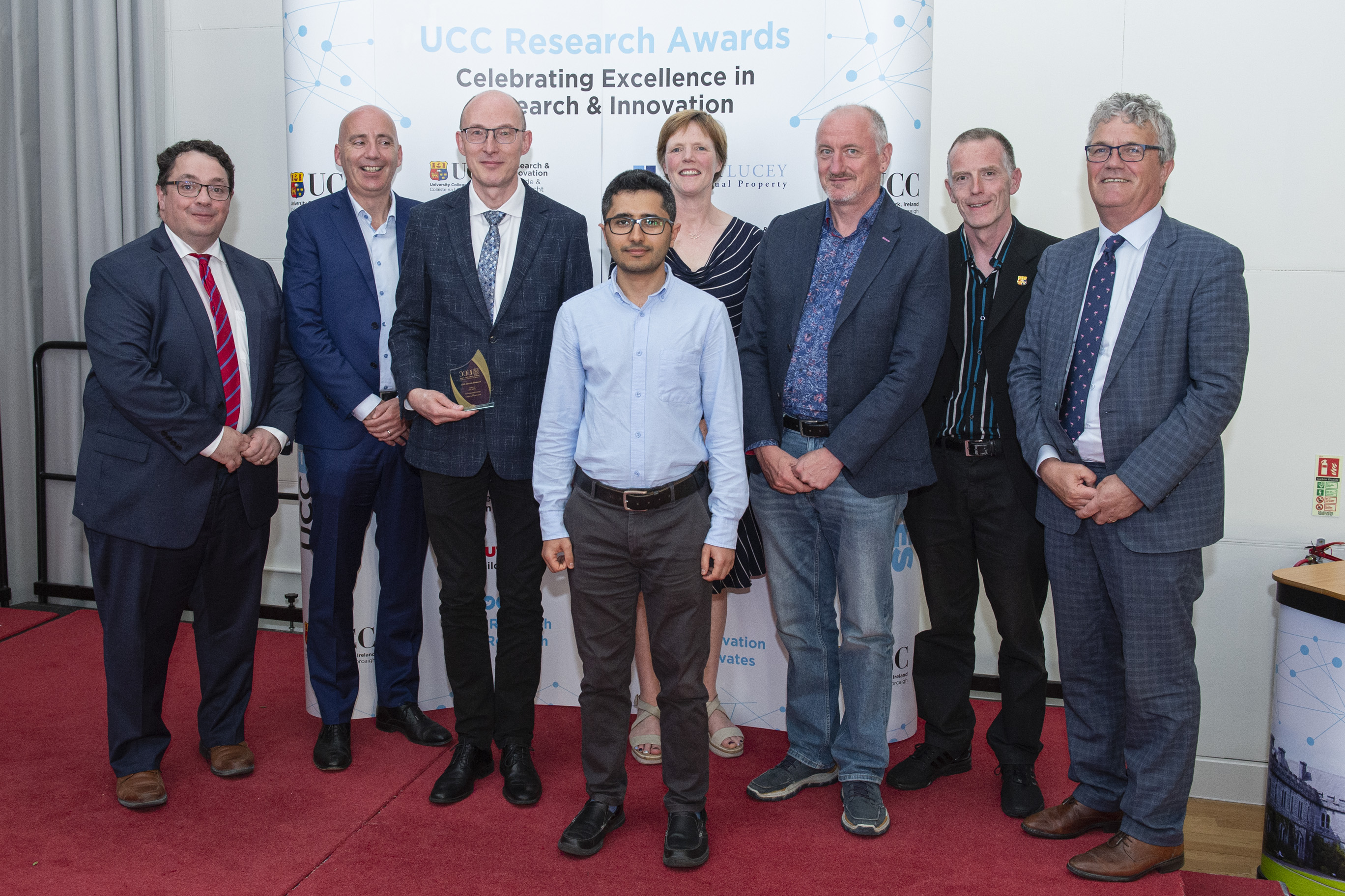UCC Applied Mathematics and Mercy University Hospital Licence Technology to Laya Healthcare

Researchers from UCC’s School of Mathematical Sciences and the Mercy University Hospital developed a mathematical model which analyses and predicts the incidence and prevalence of various diseases across the population and can analyse the possible effects of a range of ‘what if’ scenarios. This technology, which has been licenced to Laya Healthcare, won the UCC Licence of the Year Award at the UCC Research and Innovation Awards, held on June 1st. Laya Healthcare can use the technology to profile the risks for their customers and make commercial decisions around the building and costing of insurance policies.
This is the first licence from the School of Mathematics, and has whetted the appetite of the researchers, who are delighted to see real-life applications of their mathematical models. We sat down with Professor Sebastian Wieczorek, Professor (Chair) and Head of Applied Mathematics at University College Cork, to discuss the history of the technology and collaboration with Laya Healthcare, and the team’s achievement of being awarded ‘Licence of the Year’.
Q. Congratulations on winning Licence of the Year at the recent UCC Research and Innovation Awards! Can you describe the background of your technology and the collaboration with Laya Healthcare?
A. We are absolutely delighted to have received The Licence of the Year Award. It’s a big achievement for our group that has already helped our early-stage researchers securing new jobs in both academia and industry. The Applied Mathematics team was introduced to Laya healthcare CEO, Donal Clancy, by Prof. Micheál O’Riordain of Mercy University Hospital. An informal chat about the theory of tipping points (instabilities) led to the idea of a challenging project under the Enterprise Ireland Innovative Partnership Programme. This project was funded to develop a mathematical model to predict future trends and tipping points in the inherently unsteady Irish healthcare system.
Q. What have been the major achievements of the project since its commencement?
A. The overarching deliverable is a mathematical model describing how the Irish healthcare system evolves over time, and where its tipping points might be. The model is underpinned by a special in-house Irish population model and is accessible through a user-friendly interface. The main achievement of the model is its ability to foresee the impact of population aging and migration on the Irish population the prevalence of critical health conditions, such as cancer and diabetes, and the changes in the demand for resources in both public and private health services. As far as we know, this is the first model of this kind in Europe.
Q. What were your learnings from collaborating with industry?
A. The team and I learned firstly that mathematicians can design powerful tools to support industry, in this case the Irish healthcare industry and, possibly, inform healthcare policy making in Ireland. We have gained valuable insight into the mathematical skill set sought by industry. This, in turn, has informed development of our undergraduate and MSc programmes to make our graduates strongly competitive on the current job market. Finally, we have learnt a great deal from our licencing partners Laya Healthcare about project management and efficiency.
Q. How have these learnings helped to inform your research, and in turn shape future research directions?
A. This is the first project in Mathematical Sciences that has resulted in a technology transfer. As such, it showcases how modern mathematical techniques can be used to solve reallife problems and inform and improve decision-making and day-to-day business in industry. This has stimulated more interest in such collaborations as evidenced by two new Enterprise Ireland Partnerships in our group. These new projects are related to machine learning in the healthcare industry and are highly likely to lead to new technology transfers.
Q. How has your experience of working with UCC Innovation been throughout this project?
A. The support of UCC Innovation was invaluable, especially during the later stages of the project which involved negotiations around the technology transfer. Dr Anthony Morrissey in particular, who worked directly with us on the project for three years, was an invaluable support to us. We felt that the whole process was well organised, very efficient, and the team would be happy to work with Dr Morrissey and the UCC Innovation team again, any time.
Q. What are your future plans for this technology?
A. There are ongoing discussions about new industry initiatives that build on the technology. From an academic perspective, the project has initiated new inter-college research collaborations within UCC. We have been working with colleagues from the School of Public Health on predicting the prevalence of diabetes - one of the fastest growing chronic medical conditions in Ireland. Due to the lack of public database for diabetes in Ireland, researchers tend to use methodologies that are only valid for specific points in time at which these studies have been conducted or provide fuzzy estimates of the diabetes prevalence in Ireland. Our dynamical model is based on actual processes and thus overcomes these obstacles. In particular, the model can make reliable projections and quantify the associated uncertainties. The ultimate goal of this research is to support policy makers to prepare for the healthcare of tomorrow.
UCC Innovation
Aistriú Nualaíocht
Contact us
Room 2.44, Western Gateway Building, Western Road, Cork, Ireland, T12 XF62
